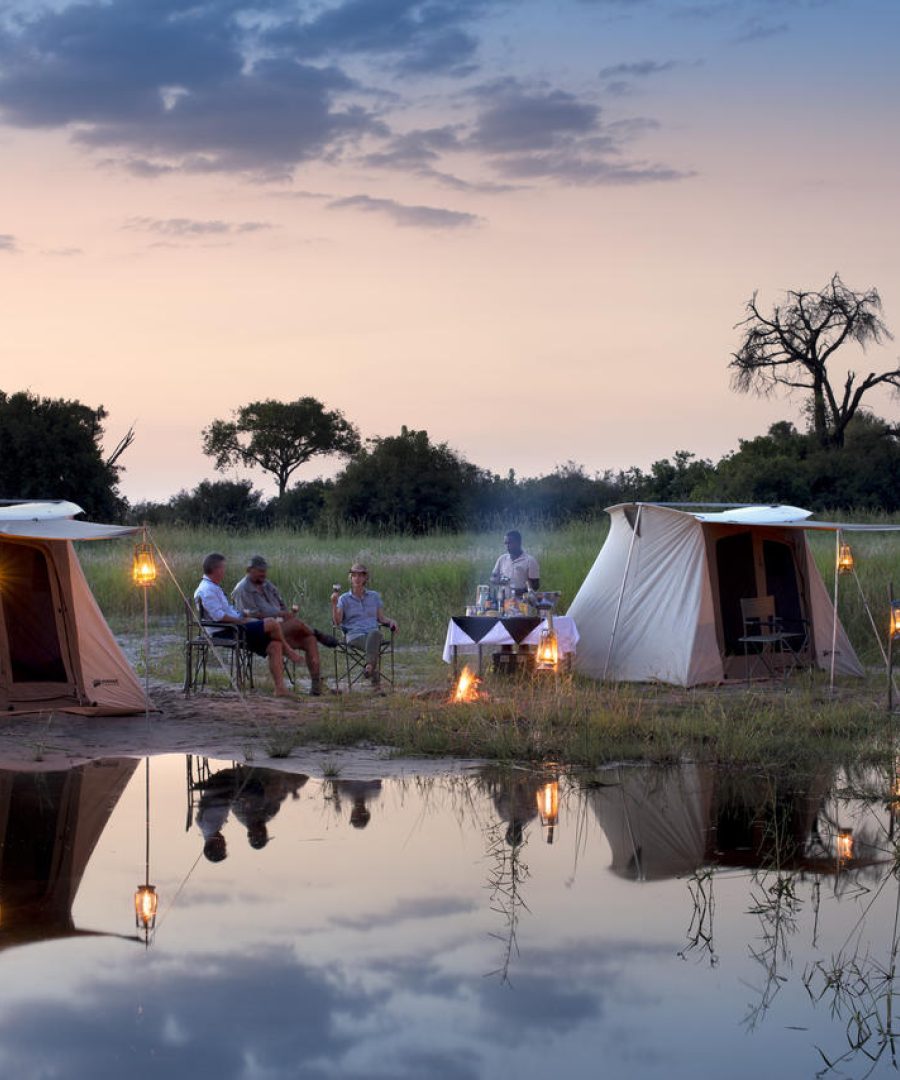Written by: Greg Fox | March 2024
When planning a safari to Botswana, the dry season, from April to October, is often recommended for its cooler weather and minimal rainfall, leading to higher concentrations of wildlife around permanent water sources like the Okavango and Chobe. However, the rainy season, also known as the green season, from November to March, has its own distinct charm. With a 30% drop in prices and fewer travellers, it offers a more budget-friendly and intimate experience. Let’s dive into the wonders of Botswana during its rainy season...
When is the rainy season in Botswana?

The rainy season in Botswana typically begins in November and lasts until March. This period is characterised by intermittent heavy showers and thunderstorms, particularly in the afternoons and evenings. The climate during this time is generally hot and humid, with temperatures ranging from 20°C to 35°C.
Landscape transformation

As the rains pour down, Botswana becomes a productive paradise interspersed with vibrant floral displays and a kaleidoscope of colours. The arid, brown terrain turns into a lush, verdant paradise teeming with life. Water bodies such as the Okavango Delta swell and rejuvenate, offering a spectacular view for visitors.
Wildlife

This season is a time of abundance for wildlife. Many species give birth, providing unique opportunities to observe young animals' playful and heartwarming antics. The Central Kalahari, in particular, is at its wildlife viewing peak during this season. Predators frequently hunt the abundance of inexperienced young prey, offering thrilling sightings.
Birdwatching

Botswana’s green season is best for birdwatching. Several bird species display their splendid breeding plumage and a myriad of migratory bird species arrive, such as the vibrant kingfishers, vocal cuckoos and colourful bee-eaters.
Photography

Photographers will find the green season a feast for the senses. The landscape is awash with brilliant colors, and the sharp light, dramatic cloud formations, and stunning sunsets create an unparalleled backdrop for wildlife photography.
Safari Mornings

Summer mornings during the green season in Botswana are exceptional. The temperature is perfect for early starts, with the comfort of midday rest, happy in the knowledge that, like the animals, you can doze off in the hotter midday. Expect short, sharp afternoon showers or thunderstorms, which are spectacular in their own right.
Zebra Migration

Botswana’s zebra migration is one of Africa’s iconic animal migrations. Each year, in perfect harmony with the arrival of the rainy season, thousands of zebras embark on a magnificent journey across the Chobe River, as well as the Savuti and Linyanti regions, in their tireless quest for water and abundant grazing grounds.




